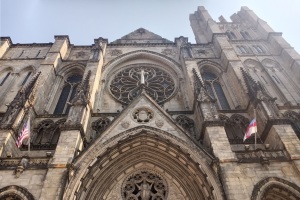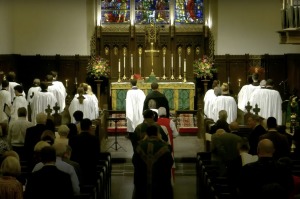Postcard from the old mining town of Silverton

Walking along Main Street, the only paved street in Silverton, at daybreak I realized this former Colorado silver mining town is one of the best examples of a bygone era.
I half expected to see an old prospector stumbling around after losing his fortune the night before in a less-than-reputable establishment. Sadly, I had no such luck. The scene would have been vastly different more than a century ago, when nearby Blair Street was lined with over 30 brothels and saloons.
Silverton, which was established two years before Colorado statehood in 1876, is not a ghost town. Real people do live here. Some 637 at the last census.
In fact, the stately county courthouse and townhall gives it a big city feel when compared to Silver Plume (population 170) and Rico (population 265), which share a similar mining history. Perhaps best of all is the architecture. By and large, Silverton’s cityscape wasn’t defaced with hideous postwar additions. Most everything is Victorian or Edwardian.
Living here requires a love for the mountains — the town sits at 9,318 feet in elevation and is surrounded in every direction by the San Juan Mountains — and everything that comes with life in the High Country of Colorado, including the general sense of isolation. For better and worse. The latter can be true in the winter, when driving to Durango, the closest city, can be an excursion. Sometimes the isolation is even forced upon inhabitants. Earlier this year at the height of the novel coronavirus pandemic, the county sheriff made headlines after banning outsiders over fear that non-locals would spread the virus in a community without sufficient medical care facilities.

The out-of-towners eventually returned by shoulder season in late spring. In fact, one restaurateur said summer tourism was exceptionally busy. Even at the end of September, when I came to Silverton, visitors were everywhere.
My visit coincided with speculator fall colors, which as of this column’s publication are at peak. Think bright yellow and burnt orange.
The best colors are on the so-called Million Dollar Highway in the 23 miles between Silverton and Ouray — arguably one of the country’s most beautiful drives. Adventurous motorists with a four-wheel drive vehicle should consider the Ophir Pass Road.
What to do and see
The outdoors is obviously the big draw, year-round. Hiking, skiing and off-roading.
Those with an interest in history and old mining towns should visit the San Juan County Historical Society. It manages several sights and attractions, including a mining museum and old county jail. Be sure to also visit the circa 1880 First Congregational Church.
Where to eat and stay
While Silverton lacks an upscale restaurant there are several eateries that span the spectrum from bar food to casual, family-friendly fayre. Consider Bent Elbow, Handlebars and the Golden Block Brewery.
The Grand Imperial Hotel is, as its name suggests, the town’s landmark hotel. There are, however, a couple of other options, including The Wyman Hotel. Housed within a gorgeous historic building, the hotel recently underwent floor-to-ceiling renovations under the proprietorship of Silverton’s new mayor. While perfect for the Instagram set, the more discerning guest will be disappointed in the overall lack of services and amenities.
How to get there
Most visitors from outside Colorado will fly into Durango or Montrose, the closest airports with year-round commercial airline service. Otherwise, the drive from Denver and Salt Lake City takes about seven hours.
Spires and Crosses, a travel column exclusive to The Christian Post, is published every week. Follow @dennislennox on Twitter and Instagram.
Dennis Lennox writes about travel, politics and religious affairs. He has been published in the Financial Times, Independent, The Detroit News, Toronto Sun and other publications. Follow @dennislennox on Twitter.




























